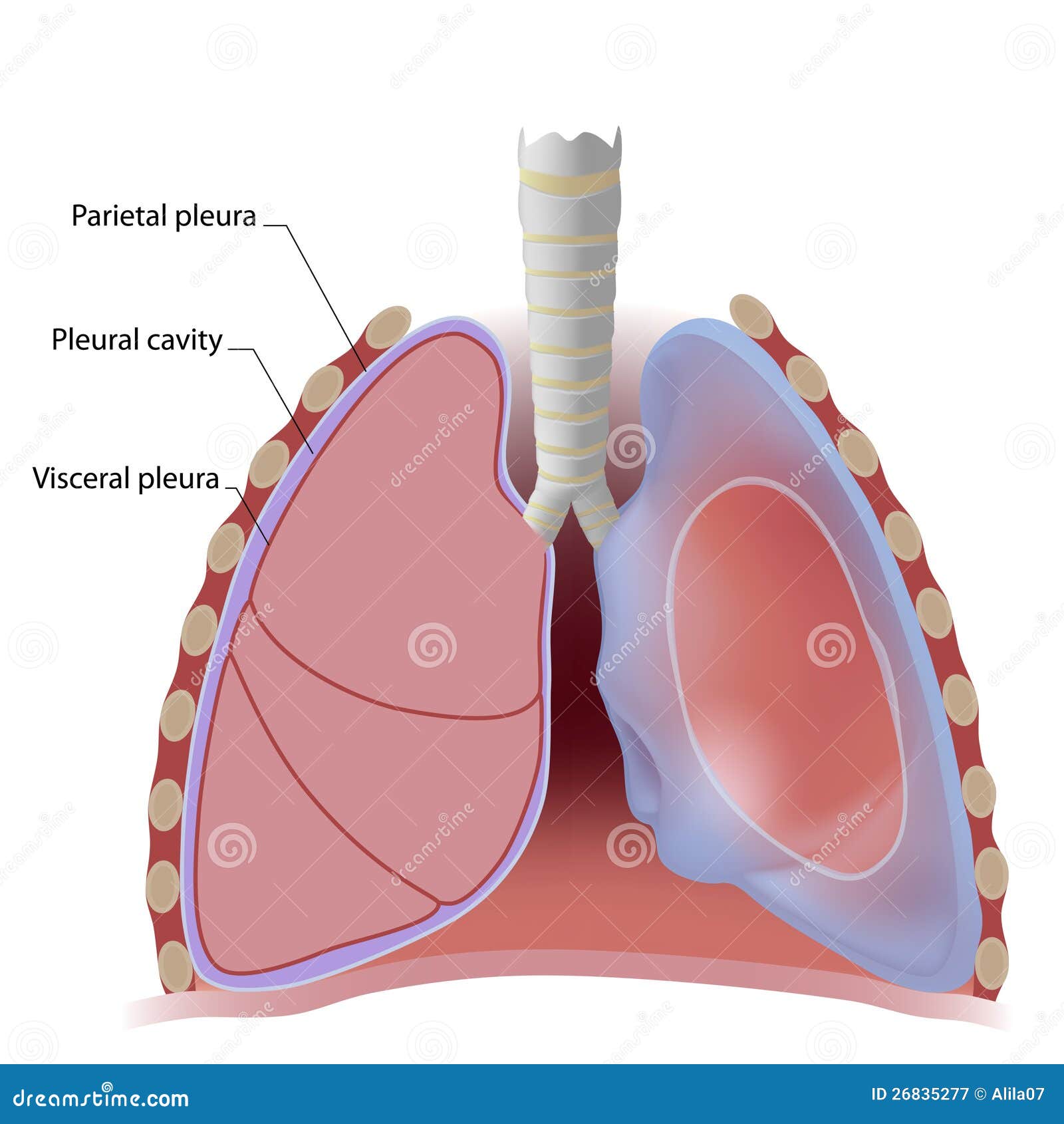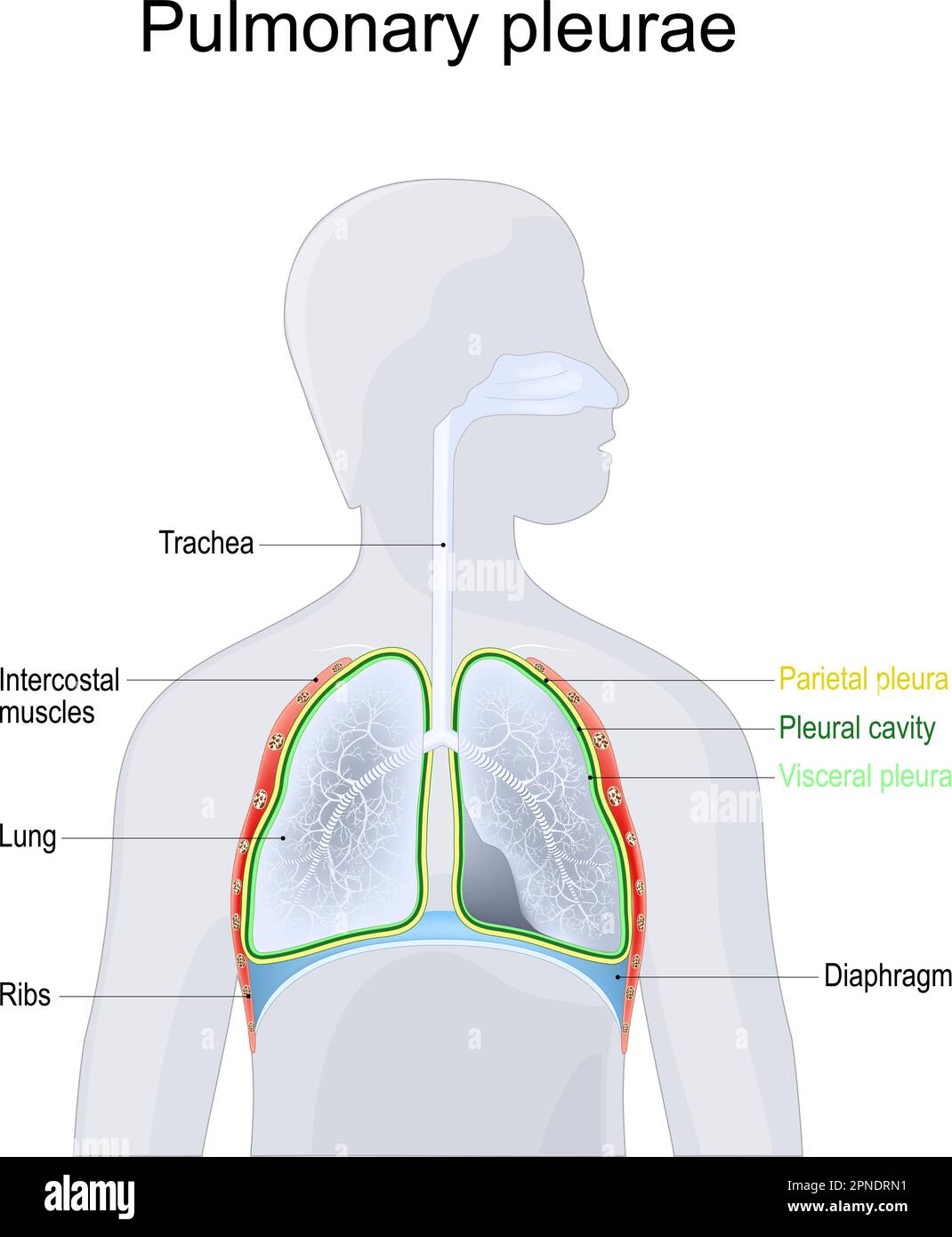Anatomy Pleura Cavities Biology Diagrams Anatomy of the Pleura . There are two pleura, one for each lung. Each pleura is a single membrane that folds back on itself to form two layers. The space between the membranes (called the pleural cavity or intrapleural space) is filled with a thin, lubricating pleural fluid.

A pleura is a serous membrane that folds back on itself to form a two-layered membranous pleural sac. The outer layer is called the parietal pleura and attaches to the chest wall. The inner layer is called the visceral pleura and covers the lungs, blood vessels, nerves, and bronchi. There is no anatomical connection between the right and left pleural cavities.[1] See Image. Lung Anatomy. With Gross anatomy. The pleura divides into: visceral pleura: covers the surface of the lung and dips into the fissures between its lobes. lines of pleural reflection outline where parietal pleura abruptly changes direction as it passes from one wall of the pleural cavity to another. Right and left parietal pleura reflect in an asymmetric manner

Radiology Reference Article Biology Diagrams
The pleura is a double-layered serous membrane that covers each lung and lines the thoracic cage.The outer layer (parietal pleura) attaches to the chest wall.The inner layer (visceral pleura) covers the lungs, neurovascular structures of the mediastinum and the bronchi.The space between the parietal and visceral pleurae is called the pleural cavity which contains a small amount of serous fluid

Each pleura can be divided into two parts: Visceral pleura - covers the lungs. Parietal pleura - covers the internal surface of the thoracic cavity. These two parts are continuous with each other at the hilum of each lung. There is a potential space between the viscera and parietal pleura, known as the pleural cavity.

Pleural cavity: Anatomy, location, function Biology Diagrams
A hollow area (pleural space) lies between the layers of your pleura. Your pleural space contains a thin layer of pleural fluid. Pleural fluid helps your pleura move as you breathe. The pleura has two layers: Visceral pleura. This is the inner layer of your pleura. It covers your lungs, blood vessels, bronchi and nerves. The visceral pleura
